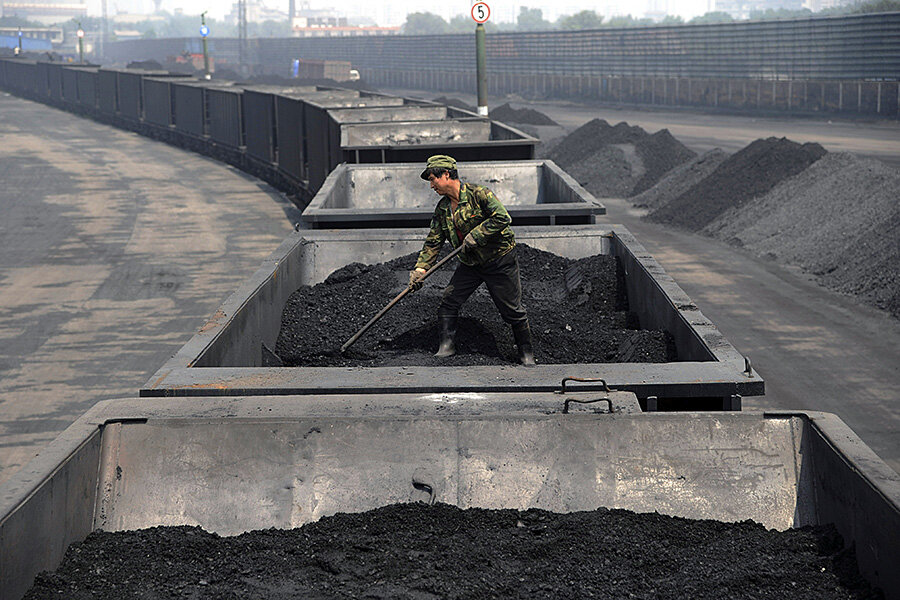Are China's climate goals too ambitious?
Loading...
| WASHINGTON
China has made big steps toward cleaning up its energy supply, and it has pledged bold progress in the years to come. The world’s largest polluter will have to follow through on those plans if the world is to make any significant reduction in the heat-trapping gases that cause climate change. But in laying out its ambitious decarbonization timeline, some wonder, has China set its sights too high?
Last November, China committed to peak its emissions of greenhouse gas emissions by 2030 as part of a non-binding agreement with the United States. Some say that timeline is overly ambitious, given the sheer amount of time and money it takes to dramatically overhaul a sprawling energy infrastructure that is heavily dependent on carbon-heavy coal.
“Anyone who says these targets are just business as usual and will be easy for China to meet, you are kidding yourself if you’re aware [of] how much coal is still being used in China and will continue to be burned in the absence of incentives to change,” said Joanna Lewis, associate professor of science, technology and international affairs at Georgetown University.
While China has made a big promise to shift from a “rising power” into a “responsible power,”– and it has already surprised some with its quickness to act – research indicates it will be challenging and require substantial domestic efforts to cut back on the heavy reliance on coal. The fossil fuel is a pillar of the Chinese economy, but also a major source of pollution when it’s burned.
“There are very few studies showing a 2030 peak [in emissions] is certainly likely [to happen], particularly under any current reference scenario,” Ms. Lewis added at a panel discussion Tuesday hosted by the Environmental and Energy Study Institute in Washington.
According to joint research conducted last year by Tsinghua University and the Massachusetts Institute of Technology, maxing out in emissions in 2030 would only be possible if coal usage peaks in China in 2020 – only five years from now. China is by far the world’s largest coal consumer, accounting for nearly half of total global usage. Its reliance on the cheap but dirty fuel has grown steadily since 2000, according to the latest BP Statistical Review of World Energy, but that growth slowed in 2014 and has even shown some signs of reversing course in 2015.
Still, China expects emissions to increase by one-third from current levels over the next 15 years – after that, a steady decline, according to another study from Tsinghua University in Beijing. A more optimistic study from the London School of Economics and Political Science recently found that this decline may arrive five years earlier than the government expects.
In Beijing and some other highly polluted cities, many residents wear masks every day and lock themselves in at home during weekends to avoid breathing the polluted air. In order to relieve the problem, China plans to grow the share of non-fossil fuel in its primary energy mix to 20 percent by 2030, as stated in the agreement with the US. There are signs the country is determined to make progress.
Earlier this year, 57 companies that exceeded a standard for harmful emissions were temporarily shut down in Linyi, a small city in Shandong Province, which has the largest energy demand in all of China.
The order – coming directly from the local government – left no space for negotiation, resulting in thousands of workers losing their jobs and a revenue loss of about $20 million, said Wang Tao, energy and climate scholar at the Carnegie Tsinghua Center for Global Policy in Beijing.
This was one step among a number of initiatives to combat air pollution in the vast country. However, this “command and control” model – the one Chinese government often relies on – shouldn’t be the only one used in tackling climate change, Mr. Wang said during the panel discussion Tuesday. In his view, designing effective regulation is an area where the US could jump in by modeling market-based instruments as solutions to the vexing pollution problem.
The Shaanxi-based Yanchang Petroleum Company has one successful pilot project with input from both China and the US, dealing with environment issues by finding new market demands.
The oil company is removing carbon dioxide from the fuel gas produced by its existing coal-to-chemical plants and also from the atmosphere. The extracted CO2 is injected into oil wells which increases the production of crude oil in a process called enhanced oil recovery.
By April, about 43,000 tons of CO2 had already been captured and re-injected into eight oil wells in Wuqi and Jingbian, two small counties in Shaanxi, to boost crude oil production.
In January 2015, a new environment protection law took effect in China which removed a cap on financial penalties, leaving companies in violation at high economic risk.
“China is trying to make a steep turn,” Wang said. “It’s important to make sure it doesn’t crash.”
Cooperation between the US and China will be vital in helping China get the technology, human resources and financial investment it needs to smooth the “bumpy road” ahead, Wang added.
This article was produced in collaboration with Northwestern University's Medill School of Journalism.







